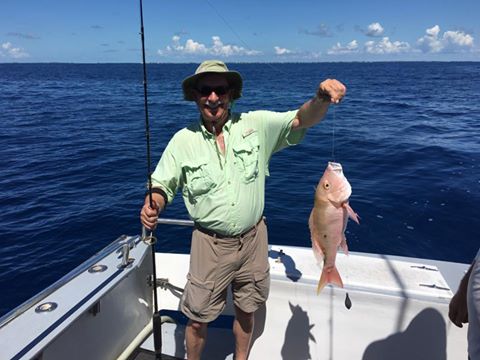“Mote Marine Laboratory scientist Dr. James Locascio describes the first-known U.S. spawning site for black grouper .
This site is located in the Florida Keys and also hosts spawning, or reproductive activity, of red grouper and red hind. The site is called Riley’s Hump in the Tortugas. It is in a research only site in the Florida Keys. It is also a spawning site for mutton snapper. This means that this area is a place where juvenile grouper will live as they develop.
It is an important step in protection of the grouper species. Grouper are considered nearly threatened and are well regulated to preserve the species.
Locascio used passive acoustic technology to identify Rileys Hump as a grouper spawning site. Passive acoustics research involves recording sounds, including those of spawning fishes. Because different species produce different sounds associated with courtship and spawning, passive acoustics can be used to identify species and document the timing and location of their reproduction.
Acoustic digital recorders were deployed at seven locations on Rileys Hump for the duration of the study. These locations included three previously established study sites where visual surveys of fishes were conducted during prior years, along with four new sites, including three sites on Rileys Hump and a site approximately 197 feet (60 meters) deep off the southwestern edge of Rileys Hump .
Black grouper, red grouper and red hind and several other reef fishes of ecological, recreational and commercial importance reproduce in large groups known as spawning aggregations, making them particularly vulnerable to mass harvesting.
Rileys Hump is a protected marine area where scientists can study the fish populations but recreational and commercial fishing are not permitted. The discovery that at least three grouper species use Rileys Hump for reproduction further indicate its importance as part of a marine reserve and the need for continued research to understand its significance for the recovery of fish populations in the southeastern U.S.
“My hope is to use the information from this study to learn more about the movement patterns of these three species of groupers” Locascio said. “If we can identify where they reproduce, where the juveniles live their lives and track the adults back to the same reproductive area, we can learn how to manage this population as a whole. We can use passive acoustics to explore long-term monitoring of habitat use by important sound-producing fish.”
Expert field assistance during this study was provided by members of the NOAA Southeast Fisheries Science Center laboratories in Beaufort, N.C., and Miami, Fla.; the National Ocean Services Center for Coastal Fisheries and Habitat Research in Beaufort, N.C.; the Florida Fish and Wildlife Conservation Commissions Overseas Research Laboratory in Marathon, Fla.; and the Reef Environmental Education Foundation of Key Largo, Fla.

